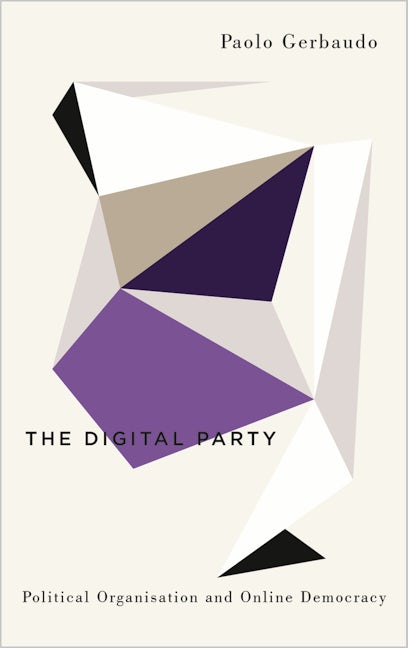Digital Parties on the Rise: A Mass Politics for the Era of Platforms

The old party system appears in serious distress, faced with challengers using digital technology as a means to achieve the utopian goal of a more democratic society.
In these times of profound crisis and political disorientation an organisational revolution is striking at the heart of western democracies and upsetting the party system.
Political parties seemed, of all the organisations inherited from modernity, the most impervious to the digital revolution that for good and many times for worse has infested all areas of society, as has become all too apparent at the time of Facebook, AirBnB, Uber and Tinder.
Yet, eventually under the combined pressure of a huge wave of discontent at neoliberal politics, and of the disruptive effect of technological change, which has contributed in eroding the competitive advantage of traditional parties, the old party system appears in serious distress, faced with challengers which are threatening to substitute the old parties with a generation of new organisations.
New digital parties and campaign organisations
This transformation of political parties is most clearly seen in Europe, where many traditional social-democratic and conservative parties, such as the SPD and the CDU in Germany, the Socialist Party in France and the Italian Partito Democratico now appear in serious trouble. Some old parties fear to go down the same way as PASOK, the Greek social-democratic party, that went from winning over 40% of the vote in the general elections of 2009, to 6% in the 2015 elections, leading to the coining of the term “pasokification” to express the disappearance of old social-democratic parties converted to neoliberal centrism.
However, as traditional parties are struggling for survival, a new generation of political parties, which I describe in my new book Digital Parties: Political Organisation and Online Democracy as “digital parties”, or “ digital populist” parties, because of their conjoining of populist discourse and digital organisational techniques, has been emerging.
Digital parties can be seen to comprise such formations as the Pirate Parties that have emerged in many Northern European countries, eclectic internet-parties such as the Five Star Movement and new left populist movements such as Podemos in Spain and France Insoumise in France, but also new campaign organisations such as Momentum, that have been key in driving the surge in popularity of Corbyn’s Labour Party in the United Kingdom.
These formations have taken analysts and sociologists by surprise, achieving impressive growth and sometimes stunning success, as most notably seen in the trajectory of the Five Star Movement that is now in power in alliance with the right-wing party Lega.
At the heart of this wave of political parties there is a promise of transformation that is not just technological but also political, where digital technology is seen as the means to achieve the utopian goal of a more democratic society.
Digital parties share the promise of a delivering a “new politics” supported by digital technology; a politics that professes to be more democratic, more open to ordinary people, more immediate and direct, more authentic and transparent than the one offered by the old political behemoths.
But how are new parties proposing to mend this gap? What are the organisational innovations that are introduced to sustain this new politics? How do these parties integrate digital technology in their internal forms of organisation? And are they really more democratic than traditional parties?
When a party becomes a platform
Looking at the activities of formations such as the Pirate Parties, the Five Star Movement and Podemos, and in particular at their internal organisational processes, it soon becomes apparent that what these organisations propose is a translation into politics of the operational model that brought such success to figures like Facebook’s Mark Zuckerberg and Amazon’s Jeff Bezos.
Social media have been instrumental in enabling movements like Podemos, the Five Star Movement and Momentum, skilfully utilising these channels, to become some of the most popular political organisations on social media in their countries. This is well known. In so doing they have managed to exploit the window of opportunity that always opens up as information and communication systems transition from one phase to the next, outperforming traditional parties only used to operating in a television and press-dominated political communication environment.
 Digital parties can be seen to comprise such formations as the Pirate Parties that have emerged in many Northern European countries, eclectic internet-parties such as the Five Star Movement and new left populist movements such as Podemos in Spain and France Insoumise in France, but also new campaign organisations such as Momentum, that have been key in driving the surge in popularity of Corbyn’s Labour Party in the United Kingdom.
Digital parties can be seen to comprise such formations as the Pirate Parties that have emerged in many Northern European countries, eclectic internet-parties such as the Five Star Movement and new left populist movements such as Podemos in Spain and France Insoumise in France, but also new campaign organisations such as Momentum, that have been key in driving the surge in popularity of Corbyn’s Labour Party in the United Kingdom.
These formations have taken analysts and sociologists by surprise, achieving impressive growth and sometimes stunning success, as most notably seen in the trajectory of the Five Star Movement that is now in power in alliance with the right-wing party Lega.
At the heart of this wave of political parties there is a promise of transformation that is not just technological but also political, where digital technology is seen as the means to achieve the utopian goal of a more democratic society.
Digital parties share the promise of a delivering a “new politics” supported by digital technology; a politics that professes to be more democratic, more open to ordinary people, more immediate and direct, more authentic and transparent than the one offered by the old political behemoths.
But how are new parties proposing to mend this gap? What are the organisational innovations that are introduced to sustain this new politics? How do these parties integrate digital technology in their internal forms of organisation? And are they really more democratic than traditional parties?
When a party becomes a platform
Looking at the activities of formations such as the Pirate Parties, the Five Star Movement and Podemos, and in particular at their internal organisational processes, it soon becomes apparent that what these organisations propose is a translation into politics of the operational model that brought such success to figures like Facebook’s Mark Zuckerberg and Amazon’s Jeff Bezos.
Social media have been instrumental in enabling movements like Podemos, the Five Star Movement and Momentum, skilfully utilising these channels, to become some of the most popular political organisations on social media in their countries. This is well known. In so doing they have managed to exploit the window of opportunity that always opens up as information and communication systems transition from one phase to the next, outperforming traditional parties only used to operating in a television and press-dominated political communication environment.
This ease and gratuity of registration implies a disconnection between membership and donorship. While in traditional parties, members were expected to pay periodic dues, in the new parties there are no membership dues to speak of, meaning that parties need to rely on other sources of funding, including donations from members. In the case of Podemos it is not even necessary to be a Spanish citizen: also the criteria of citizenship and residency are abandoned. This opening up of membership has important consequences for the way in which political parties operate, and for the new mass politics that they bring to the fore.
A new mass politics?
The free membership model adopted by digital parties in imitation of digital companies entails a radical lowering of the barrier to entry, meaning that it is far easier for sympathisers to become full members. This lowering of the barrier has had evident consequences for these formations as seen in their impressive capacity for rapid growth, reminiscent of the explosive rise of the few successful start-up companies that survive beyond the embryonic state.
The Swedish Pirate Party managed to attract 13,000 members in its first three months of existence. Coinciding with the 2006 protests in support of Pirate Bay, the Pirate Party tripled its member count to 42,000 members, to become the third largest party in Sweden. Podemos of 2018, just four years since its foundation counts over 500,000 members, just four years since its foundation in 2014. France Insoumise managed in a very short span of time to recruit thousands of people and claimed 533,566 supporters as of May 2017, over ten times the membership of the Front National and the Parti Socialiste, both standing at around 40,000 members. Digital parties are now among the largest parties in their respective countries, and this fact alone constitutes a major achievement.
Amidst a post-crash era marked by grotesque social inequality that goes hand in hand with growing political polarisation, digital parties have managed to act as a point of attraction and accumulation for masses of individuals who were aggrieved by the economic crisis and felt unrepresented by existing parties. They have been impressive in terms of the quantity or scale that they have managed to muster, putting into the shade the membership numbers of more traditional parties, who have instead seen their membership eroding.
What kind of mass participation?
This mass character proceeds from the very platform logic these parties have adopted. Like commercial platformism, political platformism is chiefly concerned with quantity and scale. It is geared towards gathering ever-increasing numbers of members in its ‘stack’. Using the polling and rating mechanisms built into the architecture of social media and online platforms more generally, they not only constantly accrue new members or better members/users, but also constantly engage them in all types of mass consultation, extracting data from their interactions, and adapting to their shifting opinions, with the ultimate aim of adapting to their evolving tendencies, in ways not too dissimilar from those practiced by digital companies and their data science teams.
Faced with this success in terms of growth and electoral results, the question to be asked is what kind of participation is the mass participation that is on offer in these parties? At face value what these parties promise is a participatory democracy doing away with the most problematic aspects of representative democracy, a democracy in which people can “participate rather than delegate” to quote the Five Star Movement’s digital strategist Davide Casaleggio.
A similar discourse is proposed in Podemos in whose statute the word “participation” is repeated almost obsessively, and in other formations such as Pirate Parties and France Insoumise.
Limited participation
However, what is delivered in practice differs rather significantly from this lofty promise.
In reality the room of intervention of the membership in decisions and discussion is very limited, and seems to reflect the oft-decried shallowness of many social media discussions.
It mostly takes the form of a “reactive democracy”, reminiscent of Facebook reactions, and very limited in terms of its qualitative intervention on the content of decisions, rather than the participatory democracy of deep involvement that is promised on the tin. Participation in more deliberative activities, those where people can have a qualitative say on content, as seen for example in the context of policy development, has been often limited to a very small number of participants, an “aristocracy of participation”, whose views are often not necessarily representative of the views of all members.
Furthermore, elections and referendums conducted by digital parties have been very plebiscitarian in character. They have almost invariably returned supermajority results in favour of the view promoted by the leadership, sometimes making them look like mere show elections, ratifying from below decisions already taken from above. Rank-and-file rebellions have been extremely rare and hence the party leadership has mostly got its way.
So it is important that, at a time when digital parties are eventually bidding or already managing government power, we ask difficult questions about both the potentials and risks of the new organisational templates they have introduced.
It is true that these parties offer a new model of mass participation that is very effective and could be geared towards progressive ends. However, their digital democracy has so far mostly proven a sham, with participatory platforms being used more a site where the leadership constantly checks and verifies its consensus, rather than a space for authentic decision-making and pluralism.
Therefore it is necessary to approach digital parties with a mix of enthusiasm about their democratic potentials of mass involvement, but also conscious of their plebiscitarian distortions.
Paolo Gerbaudo is a cultural and political sociologist and a lecturer in digital culture and society at King's College London. He is the author of Tweets and the Streets, a book about social media and activism published by Pluto press in October, 2012 and of the forthcoming The Mask and the Flag.
The article is based on Paolo Gerbaudo's new book on digital parties , published by Pluto Press, December 2018. it first appeared on:
Image credit: yun. via Flickr (CC BY-ND 2.0)



